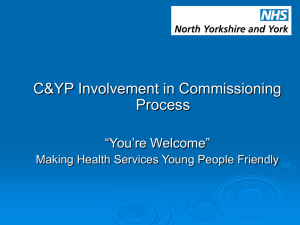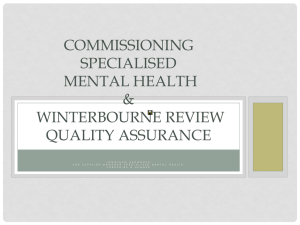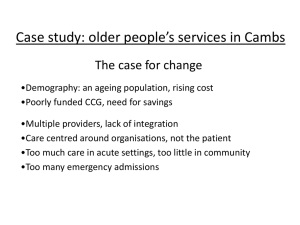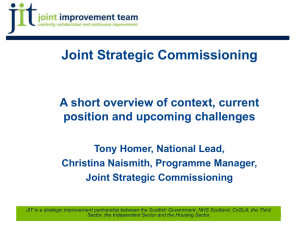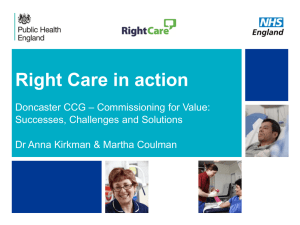GB Briefing Slides v4 - video player
advertisement
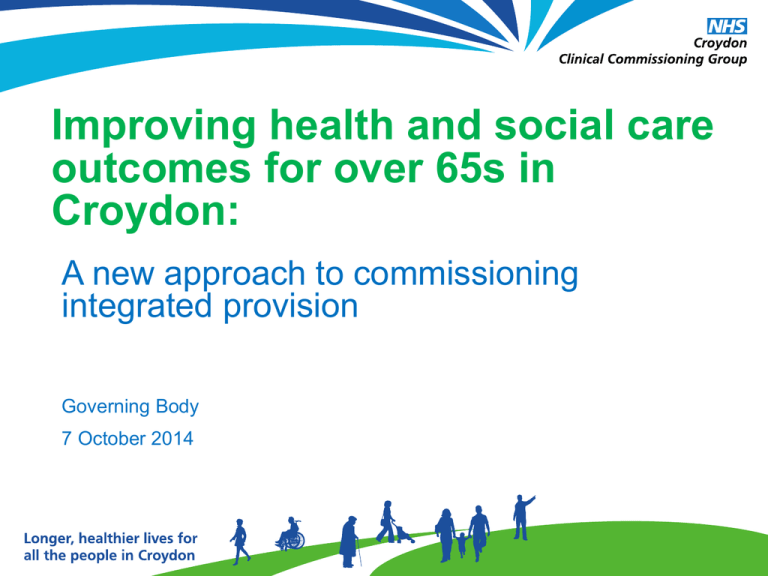
Improving health and social care outcomes for over 65s in Croydon: A new approach to commissioning integrated provision Governing Body 7 October 2014 Phase 1: Case for Change (Sept 2013, GB) Burning Platform Inherited challenges on (i) service quality and (ii) finances Care is poorly integrated with high levels of emergency admissions Future context of an ageing population will mean increased need for services to support people’s Long Term Conditions. Current NHS focus is to treat illness to a service: need shift to a service that promotes keeping people healthy A patchwork of providers responding to different contractual terms all providers need to have aligned goals for improving outcomes Contracting arrangements focus on counting activity, and not measuring outcomes for patients and promoting integration of care Phase 1: Case for Change (Sept 2013, GB) Emerging insight from international experience suggests that an outcome based approach to commissioning for a population improves outcomes and the lives of patients, and through improved integration and reduced duplication system costs also reduce. Of the possible target populations, the over 65s utilise the most NHS resources per capita and have the highest incidence of long term conditions. Phase 1: Case for Change (Sept 2013, GB) Joined-up Care: Sam’s Story, A video presentation from the King’s Fund OBC builds on the work around Service Redesign and Transformation already initiated: Under current contractual arrangements, the following improvements in the integration of care are being implemented: Rapid Response Service and Single Point of Access Development of urgent care and ambulatory care pathways Development of multi-disciplinary working across health and social care (assessments / case review) Risk stratification of patients in primary care Improved working with nursing homes. Improvement in care pathways for patients with Long Term Conditions (diabetes/COPD/cardiology) Older adults mental health services Phase 2: Preparation and Detailed Design Detailed preparation across the following areas: Definition of key outcomes (domains and goals) Detailed mapping of outcome indicators to outcome goals Detailed consideration of the service scope of the contract Market development (options appraisal, local provider development, self assessment tool kit) Development of procurement strategy Refinement and assurance of the financial baselines and planning models. Development of pricing models/options. Securing joint council and CCG commitment to the project Phase 3: Next Steps Develop joint commissioning delivery vehicle Finalise population base and financial baselines Contractualise outcomes framework and scope Development of MCP assessment milestones and criteria Deliver capability assessments Support evaluation of capability assessment milestones Preparation of contact documents and supplier data room Shadow running Risks and Mitigations (pg 20 of main report) Key areas of risks are: Lack of flexibility by regulators Technical constraints – financial, outcome or demographic Accuracy of demand projections – financial Transformation/Outcomes – lack of provider capability to deliver rapid change for patients. Recommendations Agree that the test for continuation of the project, at each checkpoint, is that the scheme continues to offer, at an acceptable level of risk, the following: improvement in outcomes for patients, and delivery of system wide efficiencies, making care more affordable Agree to proceed to Phase 3 of the ‘Improving Health and Social Care outcomes for over 65s programme’ based on the 8 principles detailed on the next slide Agree to implement using the Most Capable Provider procurement methodology, in preference to market testing




